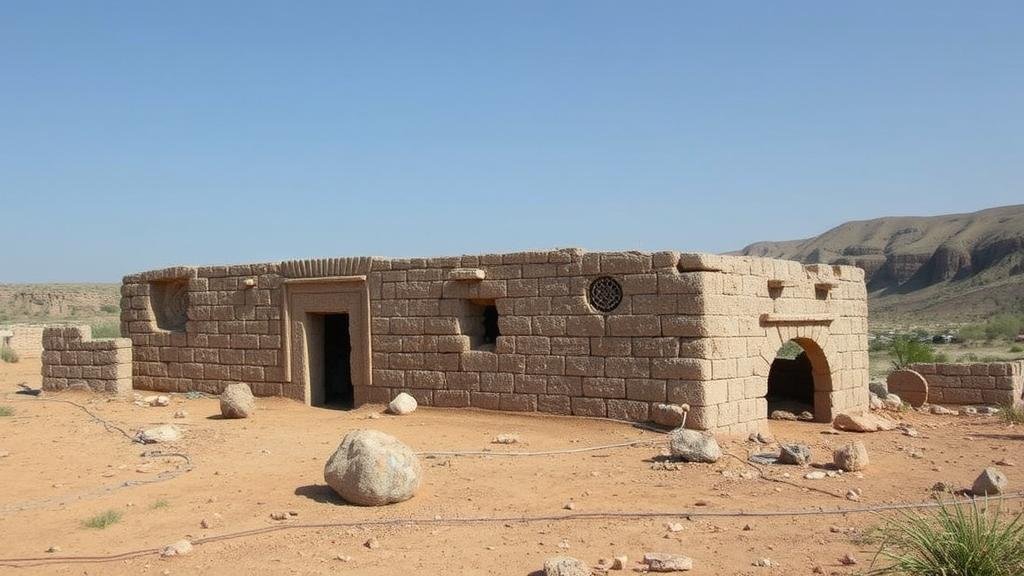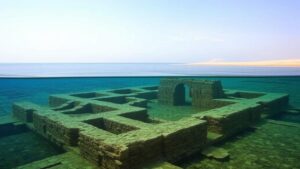Searching for remnants of meteorite shrines described in ancient texts.
Searching for Remnants of Meteorite Shrines Described in Ancient Texts
The allure of meteorites has captivated humanity for millennia. Across various cultures, fragments from the cosmos have been revered, with many ancient texts detailing their significance as sources of divinity and power. This article explores the historical context, archaeological efforts, and implications of searching for ancient meteorite shrines that have captured the human imagination.
The Historical Context of Meteorite Worship
Throughout history, meteorites have played a pivotal role in cultural narratives. Cultures such as the Aztecs and the Egyptians revered these celestial stones, believing they held divine properties. For example, the Aztecs worshipped the Teocalli of the Sun, a temple believed to be built over a meteorite. Ancient texts from the 16th century describe these shrines in vivid detail, shedding light on their cultural and spiritual significance.
Also, the 10th century Persian astronomer and philosopher, Avicenna, noted the impact of these celestial objects on agriculture and weather patterns, further embedding meteorites into the fabric of ancient societies. This suggests that the reverence for meteorites wasnt solely religious but also practical, linking them to human survival and prosperity.
Archaeological Evidence and Modern Discoveries
While many ancient texts describe these meteorite shrines, archaeological evidence has proven challenging to discern. In recent years, researchershave aimed to locate these remnants, using a combination of historical texts and modern technology. For example, a team of archaeologists in Mexico discovered remnants of a site in 2019 that was speculated to be linked to the worship of a meteorite. Artifacts found at the site included ceremonial tools and grinding stones, suggesting ritualistic practices were performed there.
Also, the famed Kaaba in Mecca houses a black stone believed to be a meteorite. Historical texts date its significance back to at least the 5th century CE, with worshippers making pilgrimages to the site, underscoring the enduring relevance of meteorites in spiritual contexts.
The Science Behind Meteorites
Meteorites come in various types, including stony, metallic, and stony-iron, each offering unique insights into the solar systems formation. Studies by institutions such as NASA have shown that meteorites are remnants of the early solar system, making them invaluable to understanding planetary development. For example, the Allende meteorite, which fell in Mexico in 1969, contains pre-solar grains and provides insight into the conditions of the early solar system.
The analysis of such meteorites not only enriches scientific knowledge but also revives interest in their cultural significance, prompting further exploration of their associated shrines.
Challenges in Locating Meteorite Shrines
Despite the excitement surrounding the search for meteorite shrines, significant challenges remain. Many ancient sites have been lost to time due to natural erosion, urban development, or looting. Also, the reliance on historical texts can be problematic, as translations may vary, leading to differing interpretations of the locations and significance of these shrines.
For example, the location of an alleged meteorite shrine mentioned in ancient texts from India remains largely speculative due to lack of definitive archaeological evidence. This question of authenticity often complicates research efforts, requiring a careful balance between scholarly interpretation and empirical evidence.
Conclusion: Unearthed Mysteries of the Past
The search for remnants of meteorite shrines described in ancient texts reveals a fascinating intersection of archaeology, history, and spirituality. The efforts to locate and understand these sites not only illuminate human reverence for celestial phenomena but also provide critical insight into the geological and cultural history of our planet.
As technology advances and researchers continue to unearth archaeological sites, future discoveries may bridge the gap between ancient beliefs and modern scientific understanding. In doing so, they will help to keep the flame of curiosity alive, allowing us to appreciate the mysteries of the cosmos and our place within it.
Actionable Takeaways
- Stay informed on recent archaeological findings related to meteorite shrines and celestial artifacts.
- Engage with organizations dedicated to celestial research and ancient history for educational resources.
- Consider visiting significant cultural or archaeological sites associated with meteorite worship to gain a deeper understanding of their impact.



